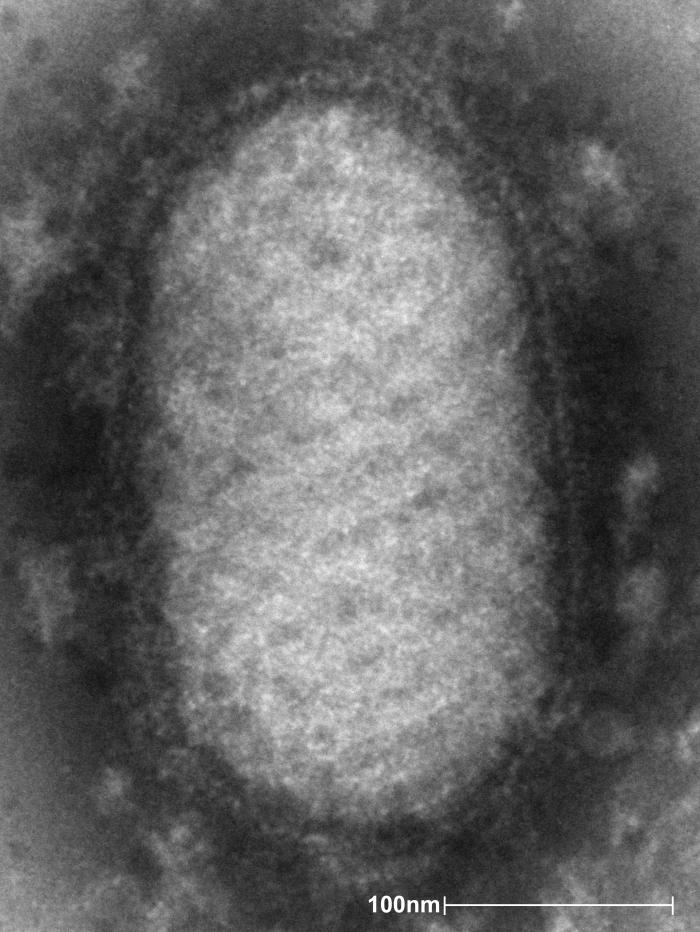Sore mouth infection: Difference between revisions
| Line 21: | Line 21: | ||
== Diagnosis == | == Diagnosis == | ||
== Risk Stratification and Prognosis== | == Risk Stratification and Prognosis== | ||
Revision as of 20:13, 25 October 2012
| Sore mouth infection | |
 | |
|---|---|
| Orf virus |
Editor-In-Chief: C. Michael Gibson, M.S., M.D. [1]
Related Key Words and Synonyms: Orf virus, scabby mouth, or contagious ecthyma.
Diagnosis
Risk Stratification and Prognosis
Can an animal become infected with sore mouth more than once? Yes, animals may become infected more than once in their lifetime but repeat infections usually occur after a year's time and are usually less severe.
Primary Prevention
Is there a vaccination for sore mouth?
Currently, there are commercially available preparations of live virus marketed as vaccines. According to the 2001 NAHMS sheep survey, approximately 5 percent of operators reported using a vaccination for sore mouth in replacement or breeding ewes. More operators (14.0 percent) reported vaccinating their nursing lambs for orf.
There are measures that may help lessen the risk of infection. These include:
- Reduce the likelihood of mouth/muzzle cuts (e.g. remove thistle or harsh brush from grazing areas)
- Quarantine new animals until sore mouth can be ruled out
- Avoid bringing animals with sore mouth to public events such as fairs and shows
The sore mouth virus survives in soil, and carrier animals may not show symptoms; as a result it is difficult to prevent infection, but using the measures above may assist in prevention.
Sore mouth may be transmitted through saliva. Some owners choose to assist the judges at shows by opening their own animal's mouth. While there is no evidence to prove that this will prevent sore mouth, it is a logical measure to decrease the spread of sore mouth by indirect contact (i.e. from infected animal to judge’s hand to uninfected animal).
Secondary Prevention
What should I keep in mind when using a vaccine?
Producers considering using an orf vaccine product in their flock should consult a veterinarian. Vaccination practices vary depending on breed and geographic location. Use of a vaccine is only suggested for previously infected flocks since the vaccination will cause an orf infection in the animals and lead to contamination of the operation with virus-containing scabs. Studies conducted by experts in Scotland suggest that if a vaccine product is used in a flock, it may decrease the severity of illness.
References
- http://www.cdc.gov/ncidod/dvrd/orf_virus/large_images/orf_kid.html
- http://en.wikipedia.org/wiki/Orf_%28animal_disease%29
Acknowledgements
The content on this page was first contributed by: C. Michael Gibson, M.S., M.D.